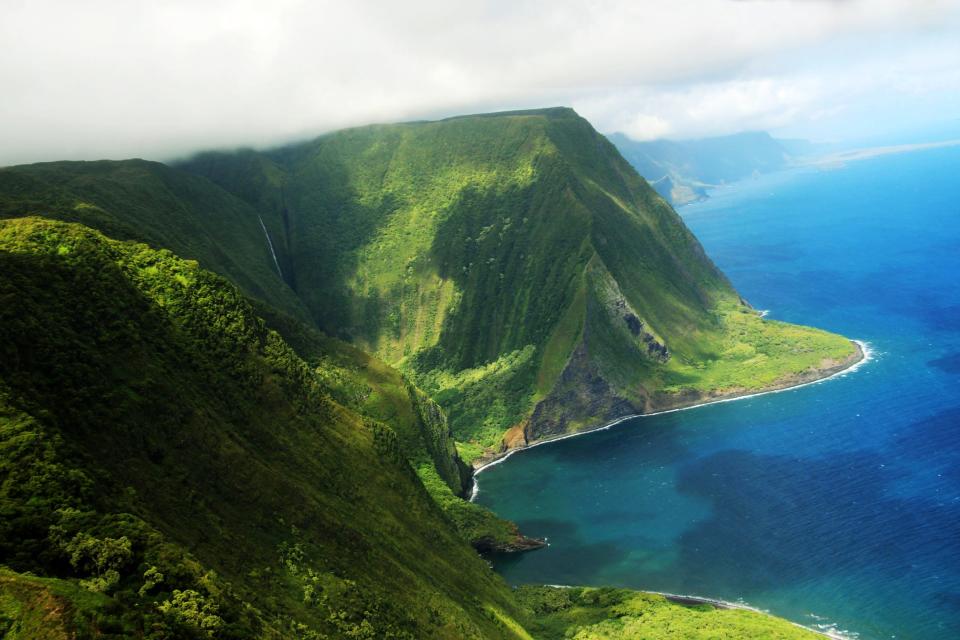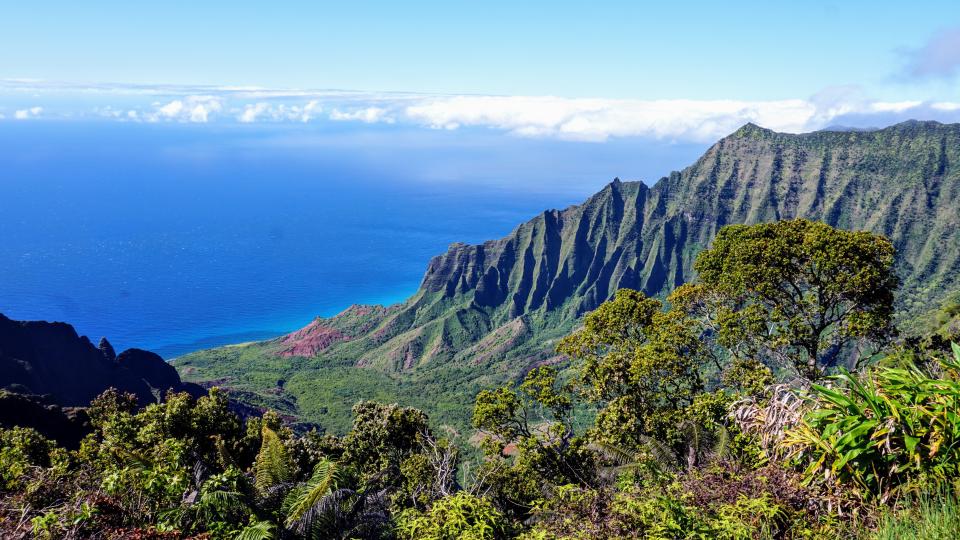Visit Hawaii cheaper: What to know about camping on the islands
Hawaii offers many things for visitors, from raw natural beauty to iconic historical and cultural sites. Truly experiencing the isolated archipelago means more than just strolling through Waikiki in Honolulu – although the surf there is renowned – and hitting other must-do activities like hiking Diamond Head and touring 'Iolani Palace. Truly experiencing Hawaii means getting outside to enjoy the sunshine and the surf.
For centuries, living in Hawaii meant also living in harmony with the outside – from mauka (mountains) to makai (ocean). The Native Hawaiians' livelihoods have always rested on Hawaii's natural resources, like fishing and farming, and today, many locals enjoy spending time surfing and spending all day at the beach.

HAWAII IS DITCHING STRICT ENTRY REQUIREMENTS: No more COVID tests, vaccine proof or quarantine
CRUISING HAWAII IS A UNIQUE ADVENTURE: A passenger's experience on the first ship back to the islands
So it makes sense that for the most up-close and personal encounter at Hawaii's natural wonders – the breathtaking landscapes like the slopes of Haleakala and stunning endemic species like the nene – you should skip a hotel in Waikiki and go au naturel with a camping trip. During the day, you can snorkel, surf, or lay on the sand to spot whales. And at night, you can gaze up at the stars and let the sound of waves crashing lull you to sleep.
Here's what you should know to plan your camping trip:
What wildlife should I watch out for in Hawaii?
Hawaii has few natural predators when it comes to the great outdoors when compared to other places. We don't have mountain lions or venomous snakes – so you can breathe a sigh of relief. However, we do have wild boars.
Wild boars are typically found on Hawaii Island, Oahu and Molokai, and hunting them is a big part of local culture here. For your safety, stay on the designated campgrounds or trails. Pig activity that suggests one may be nearby includes mud rubbings on trees or cross trails. If you do get confronted by one, jump aside, or climb onto a tree or behind it.
Hawaii also has centipedes as a common pest and one type, unfortunately, does bite and can inject you with a venom that causes swelling. They like to hide in decaying wood and piles of leaves or mulch. If you do get bitten, an ice pack or medication to reduce pain like ibuprofen may help. If you get a severe allergic reaction, it's time to go to the doctor.
Being able to spot Hawaii's endemic species and other beautiful wildlife is a reason to get outside and camp. Hawaii is home to many birds and marine creatures, like spinner dolphins. If you do end up catching a glimpse of one of these animals, in or out of the water, please keep your distance of at least 50 feet and never touch them. Many of these native species are endangered and vulnerable to human activity. It's likely illegal to get too close to them.
► Quick tip: There is a saying in Hawaiian that goes, "Malama 'aina" and it means to care for and respect the land and also the ocean. That means picking up your trash and leaving the place exactly as you found it, as well as being courteous to locals.
What time of the year is best to camp in Hawaii?
With that out of the way, if you want to look for these majestic animals from afar, you should time it correctly. On Maui, the whales are spotted at Makena State Park. On all the islands, you can see sea turtles and Hawaiian monk seals.
While many people perceive that Hawaii doesn't have seasons, they're somewhat misguided. Hawaii has two seasons: summer is the sunny season and winter is the rainy season.
It's likely that if you plan for a camping trip during the winter on Kauai, home to one of the wettest mountains in the world, you will encounter rain. On that note, the seasons also affect the swells. For instance, the North Shore lives up to its iconic massive waves at Pipeline and nearby breaks during wintertime, so it might not be ideal for a family hoping to frolic in calm waters.
Of course, there are microclimates across the islands, like how Mauna Kea can have a snowy summit. On that note, if you do make a visit to Mauna Kea or Haleakala in the early morning, bring a jacket because it will be cold.
Story continues below.
What permits do I need to go camping in Hawaii?
Although there are private campgrounds like Kahua Nui-Makai in lush Kaneohe on Oahu, Hawaii's State Park System has reservable campsites across Maui, Molokai, Hawaii Island, Oahu and Kauai.
You can find the right spot for your travel needs, like if you want to be nearby a colored sand beach or a waterfall, or both. To browse state parks and their individual details, visit the website.

As far as camping goes, the most up-to-date information on closures can be found on the Department of Land and Natural Resources website. This is also where you will reserve your campsite and maybe lodging up to one year in advance. You can only book one campsite or cabin at a time and, unless you're staying at Napali Coast State Wilderness Park, it will cost $30 per night for nonresidents. A permit is good for 10 people and up to five consecutive nights.
► Quick tip: Sorry to anyone with #vanlife dreams. All Hawaii State Park campgrounds, except for one, don't allow campers to sleep in their cars, including campers, vans, trailers and regular cars. Waianapanapa State Park in Maui does have a small area for camper vans.
Best Hawaii campgrounds
Here are the three campgrounds I recommend to visitors to Hawaii, however you really can't go wrong with anywhere:
On Kauai, Kokee State Park has a multitude of trails for hikers, including circling the rim of Waimea Canyon. Those who want to spot native birds, insects and plants will have come to the right spot.
A remote park at the end of the Road to Hana on Maui, Waianapanapa State Park offers campers the chance to experience the power of mother nature. Explore a black sand beach, tide pools that turn red, lava tubes, sea arches, freshwater caves and more.
For the real adventure-seeker, Haleakala National Park offers two primitive wilderness tent camping areas that can only be reached by hiking trail, one of which is pretty streneous. Prepare for astounding remote landscapes, like an native shrubland that helps to colonize lava flow, and the most beautiful stargazing.
Kathleen Wong is a Honolulu-based writer and editor. You can follow her on Twitter @katmarwong.
This article originally appeared on USA TODAY: Hawaii travel: What you need to know about camping on the islands

